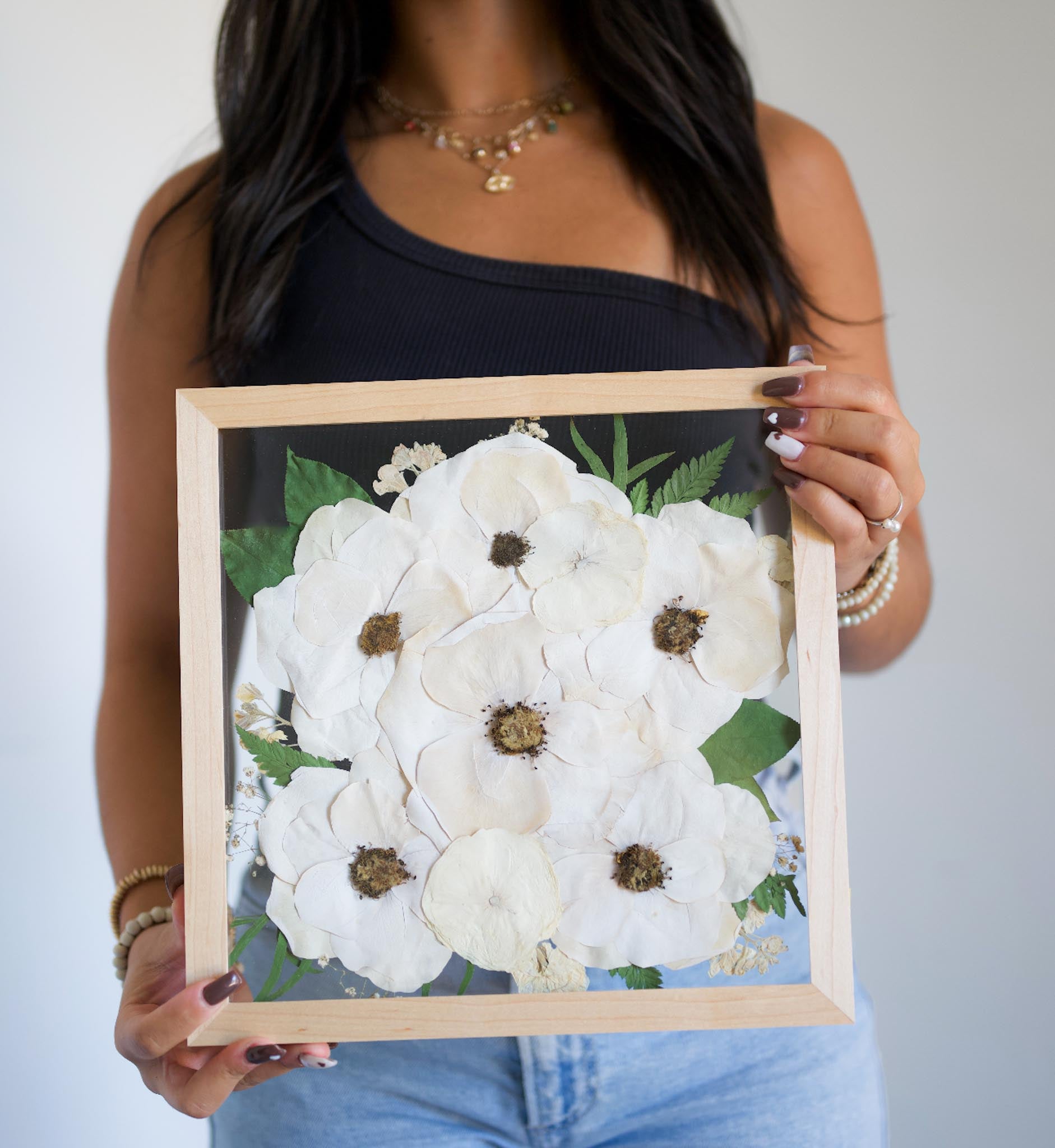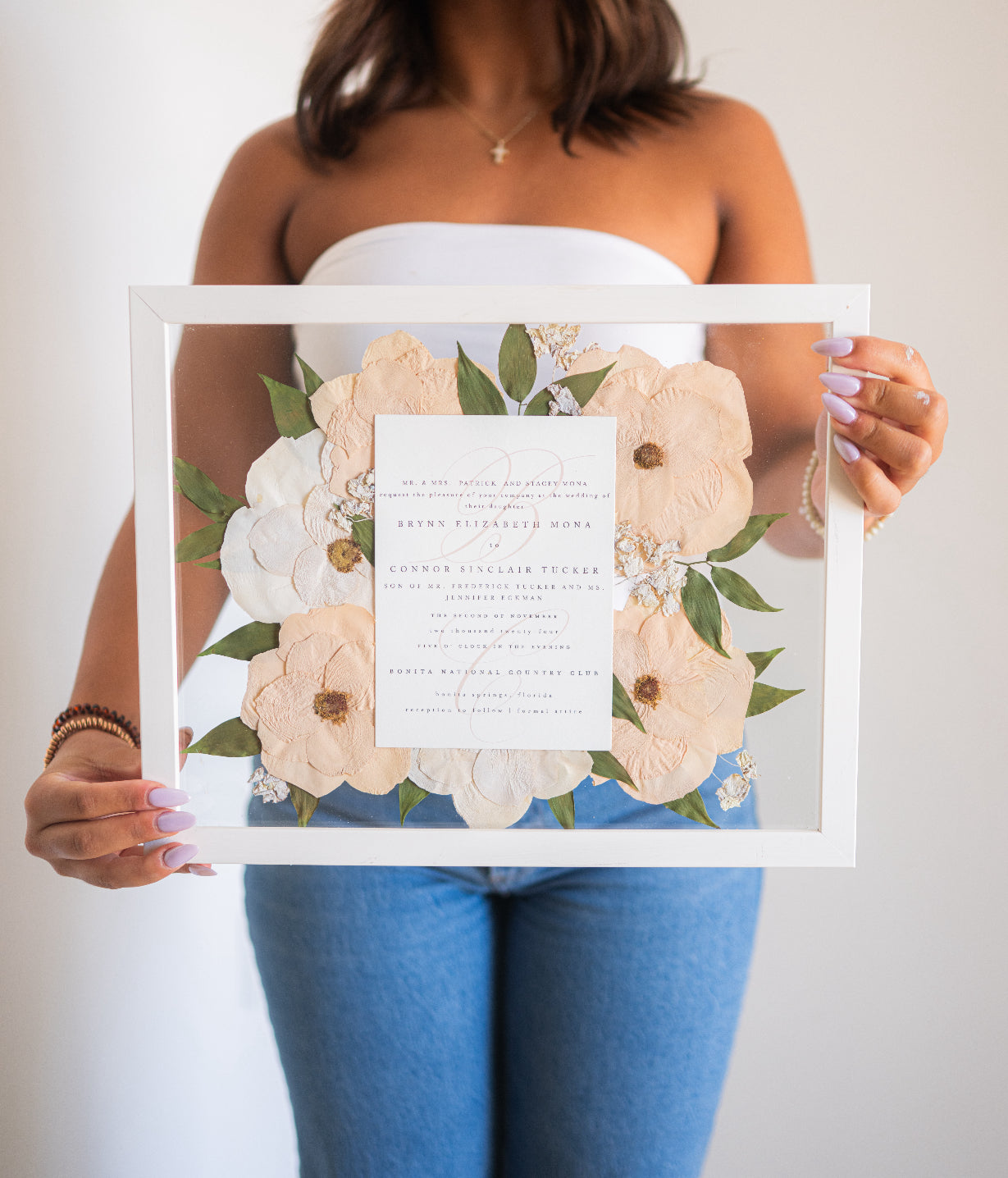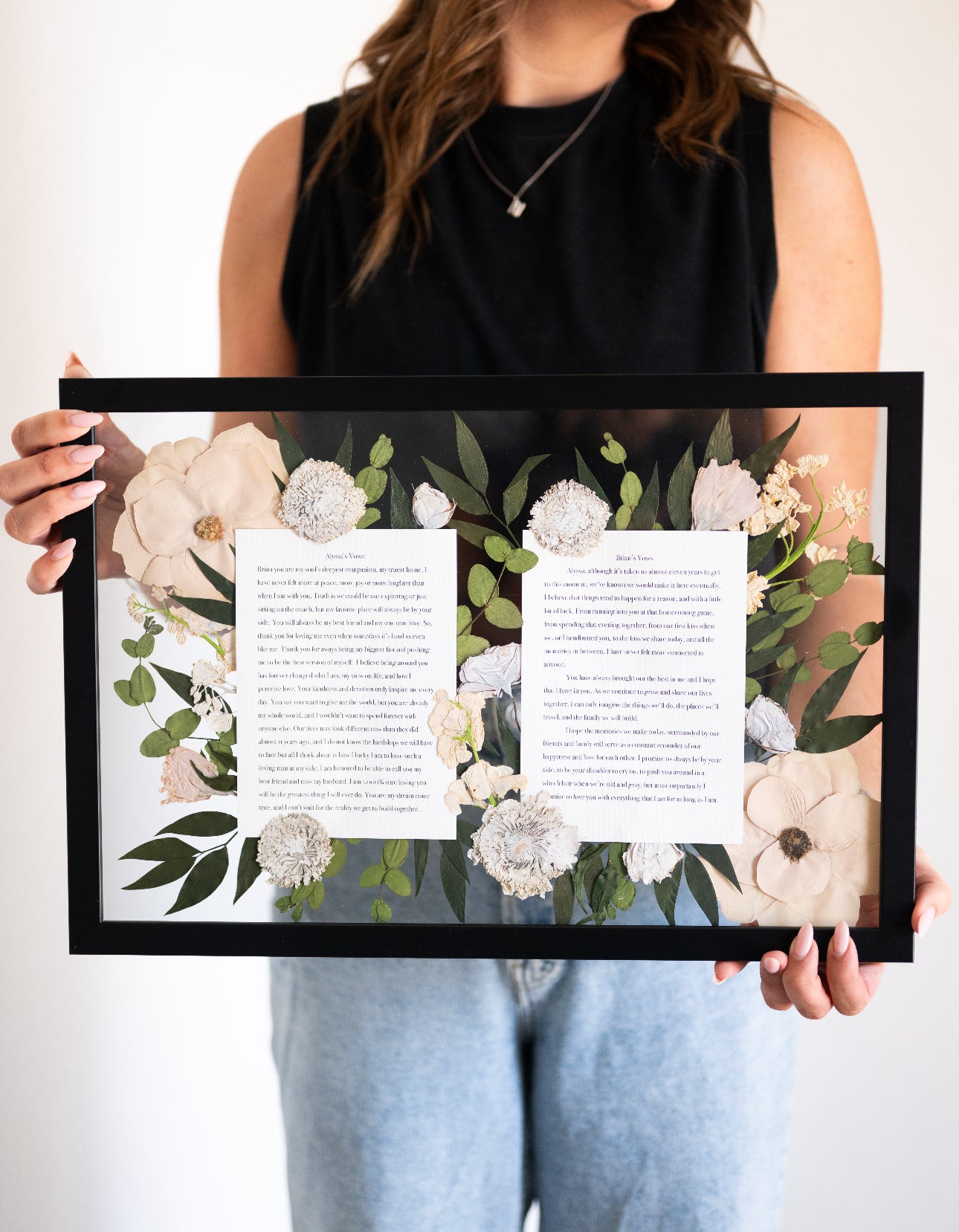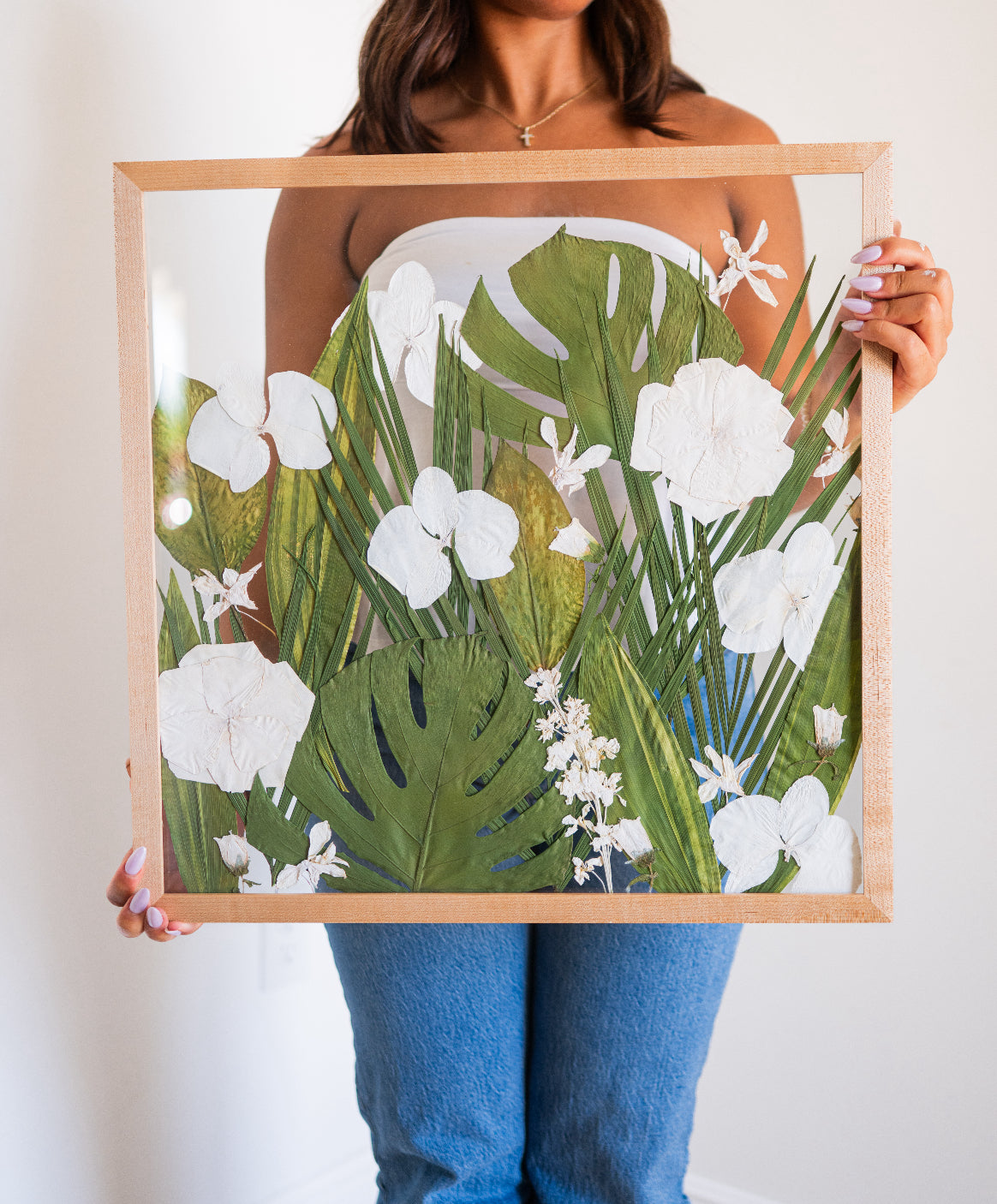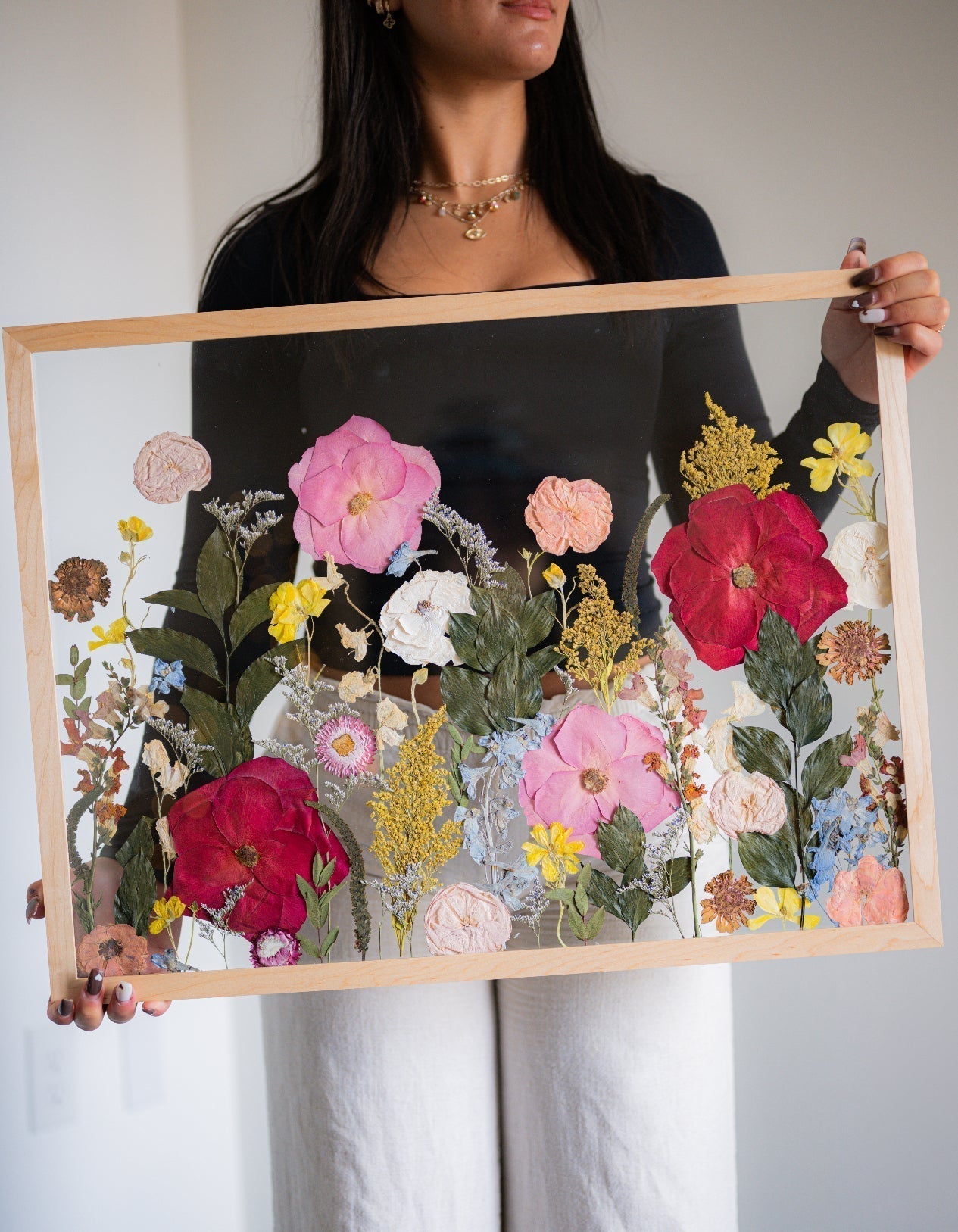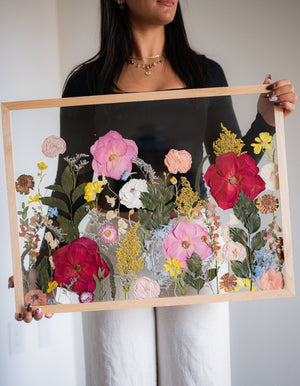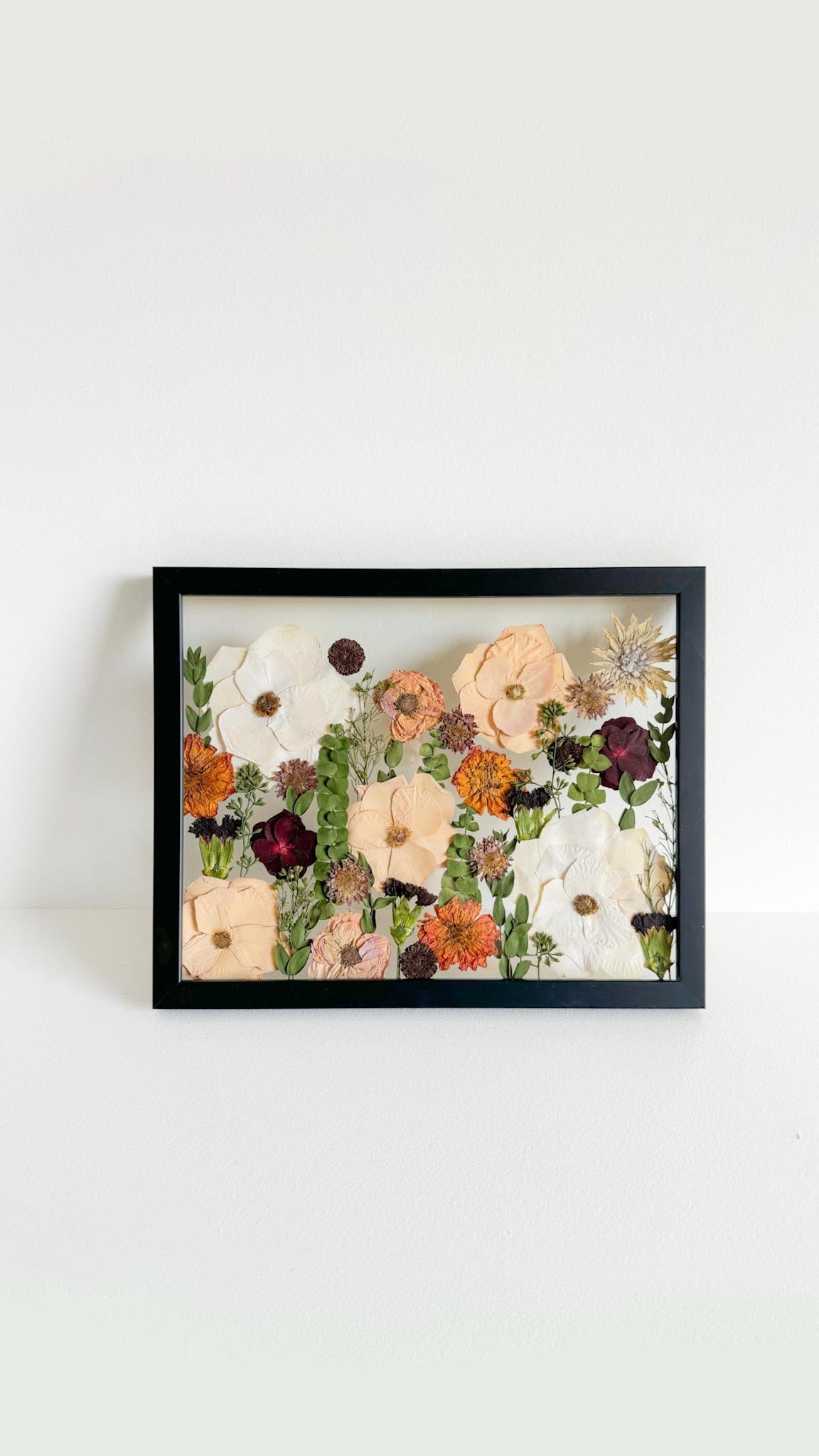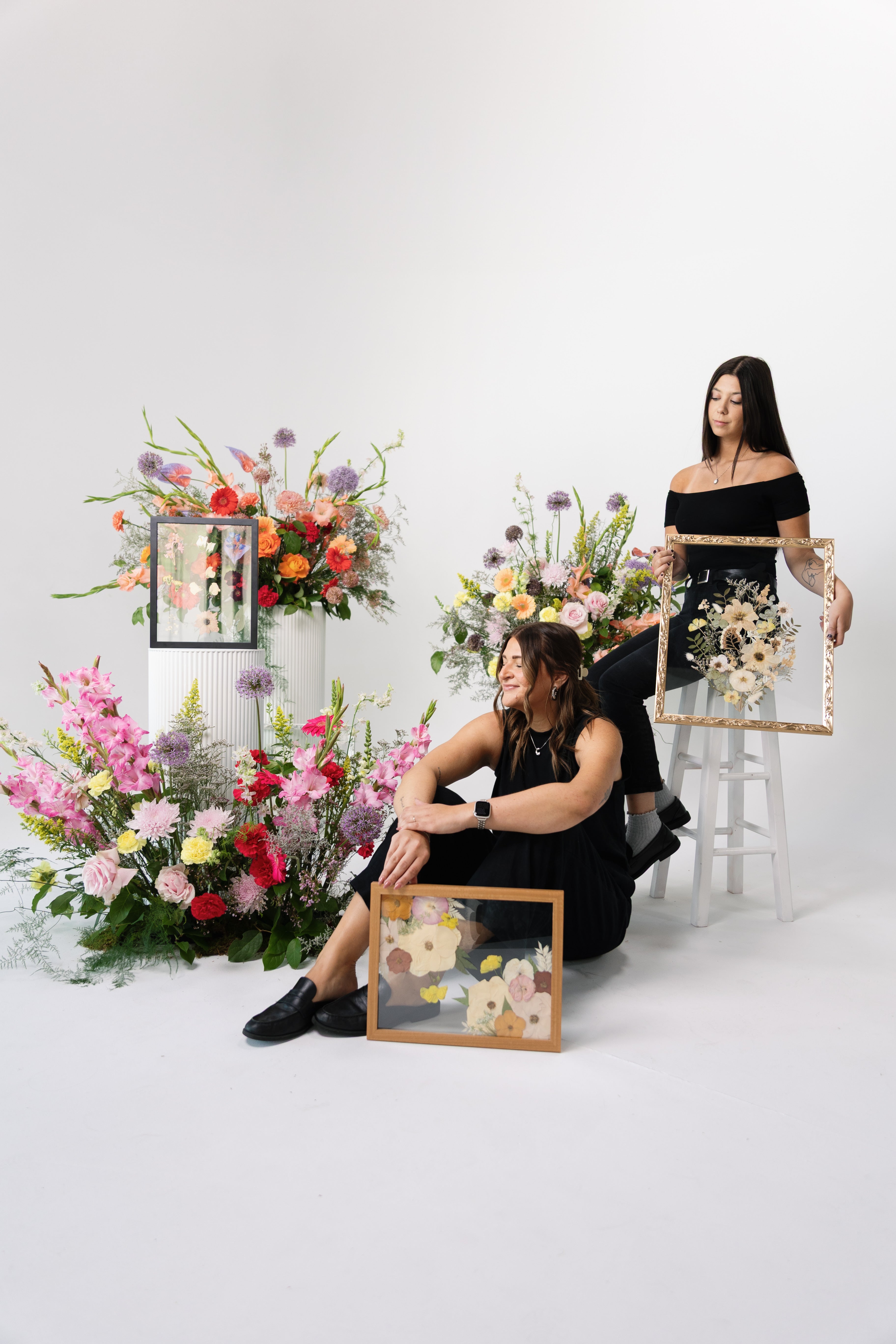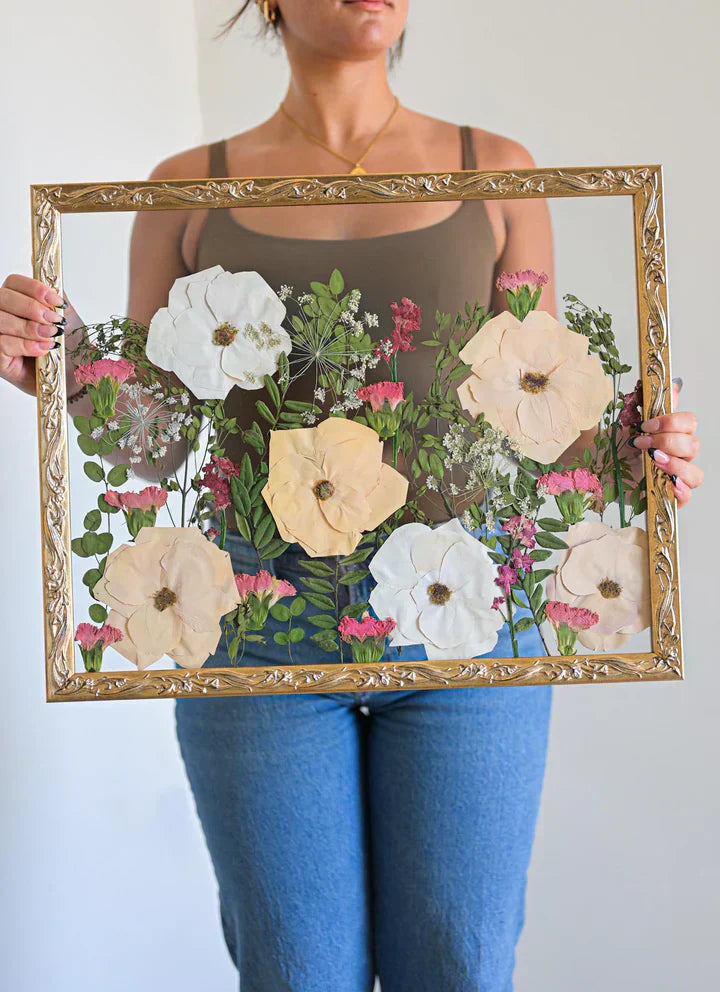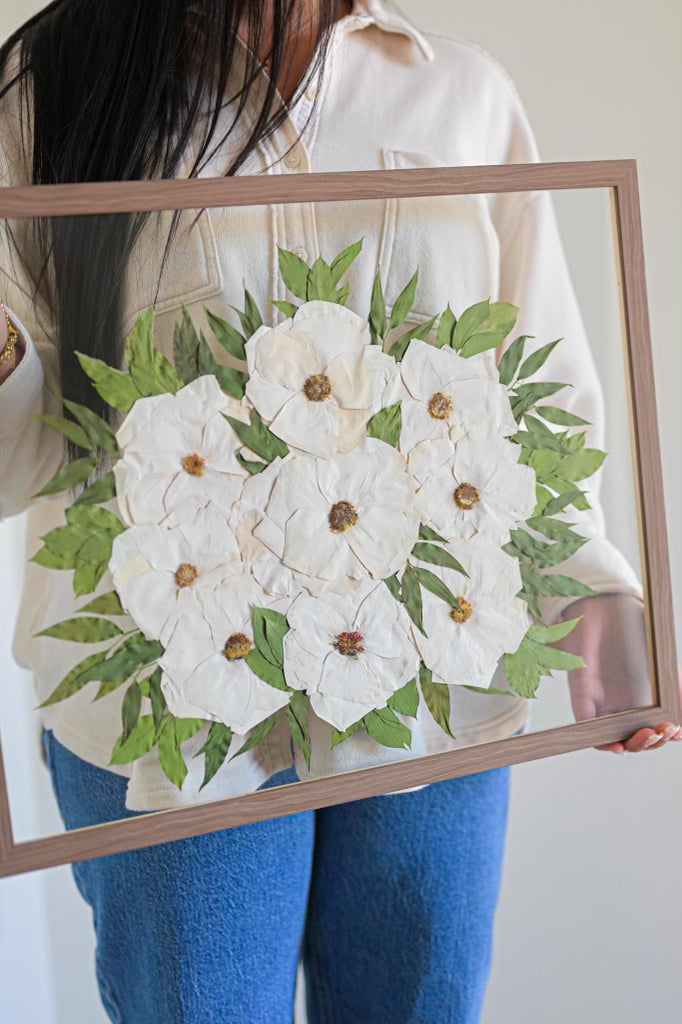Few things capture life's precious moments like flowers. Be it your wedding blooms, a gift from your loved one, or an anniversary present, these special occasion blooms hold meaning long after their petals first unfurl. And preserving these meaningful flowers becomes important.
Preserving flowers can feel overwhelming because it requires immediate attention and proper care. Without the right steps, the results might not turn out as you'd hoped. With so many preservation methods available, how do you know which one truly works best for your specific type of bloom? To make things more confusing, conflicting advice can often prevent you from taking the right action at the right time.
This guide will help you cut through the confusion. Here you’ll find answers to the most common and critical questions about how to preserve a bridal bouquet with expert insights. No matter your reason for preserving flowers, this FAQ delivers clear and practical advice to help you make informed decisions.
What’s the Best Method for Flower Preservation?
There are a lot of ways to keep your flowers preserved. But pressing is considered one of the best and most timeless ways to preserve flowers from weddings, especially for fragile flowers like roses, daisies, and baby's breath.

Unlike other methods that may alter texture or require chemicals, pressing simply involves flattening flowers between absorbent materials. This allows them to dry naturally while retaining their intricate shapes.
Pressing is great for keeping small features like veins on petals, colour changes, and even meaningful arrangements from weddings or anniversaries. It's also cheap. If you want to DIY, you only need parchment paper, heavy books, or a flower press. Use fresh, dry flowers and change the blotting paper often to keep moisture from building up for the best effects. Moreover, pressing gives you elegance without sacrificing quality, whether you're a DIYer or trying to save a bridal bouquet.
How Long Do Preserved Flowers Last?
Preserved flowers may last up to 5 to 30 years, but they need to be held with the right technique. The pressing procedure removes all moisture carefully and leaves behind a beautiful keepsake that won’t rot. Additionally, pressed flowers are less likely to get damaged than other drying processes. It is because they are delicate and two-dimensional.

To make it last as long as possible, keep these florals in a safe spot and away from their biggest enemies, like moisture and direct sunlight. Moreover, when you store them in acid-free frames (away from humid environments), it further extends their lifespan as well as prevents yellowing and brittleness.
Can You Preserve an Already Wilted or Dried Flower?
Pressing can often rescue blooms that seem past their prime. However, nothing can beat the results of fresh flowers. On the other hand, slightly wilted flowers may still press beautifully if they retain some flexibility.
The key to successful preservation lies in assessing the flower’s condition properly. Flowers that are only beginning to droop (with petals still pliable) can often be revived during pressing, whereas completely dry and brittle blooms may crumble. You can lightly steam larger flowers like peonies to make them flexible enough to press, but you may need to put delicate flowers like pansies between layers of wax paper to keep them from collapsing.
However, keep in mind that squeezing flowers that are starting to wilt can help them look better, but it's not a real resurrection. For the greatest results, set realistic expectations and focus on keeping flowers at their early stage of drooping.
Why Do Pressed Flowers Turn Brown?
Even with the most perfect pressing technique, some flowers inevitably turn brown over time. But why does this happen?
When flowers are pressed, their natural moisture escapes through the cell walls and brings pigmented compounds to the surface. This oxidation process, similar to how a sliced apple turns brown, is particularly common in certain flowers like roses or peonies.
Also, you must be aware that some flowers are naturally more prone to browning than others. For example, hydrangeas darken faster compared to flowers that have strong petals (like daisies) because their delicate petals hold a lot of water. Humidity, sunlight, and even the oils from your fingers can speed up discolouration, so the environment also has an effect.
Will Humidity Ruin Pressed Flowers?
The answer is yes! Humidity is the number 1 enemy of pressed wedding bouquets. Just like how bread goes soft in a steamy kitchen, pressed flowers absorb moisture from damp air. This makes them limp, discoloured, or even mouldy over time.
The science behind this scene is simple. The moisture reactivates the plant cells and hinders the preservation process. However, there are many easy ways to protect your preserved flowers from a wedding or any occasion. The first is to always store and display pressed flowers in a dry and cool place, particularly away from the kitchen or bathroom.
Additionally, when you put acid-free matting and UV-protected glass around them, it makes a protective barrier. If you consider these steps, your pressed flowers will stay beautiful for years without being attacked by dampness. Lastly, keep in mind that the drier the air, the longer your flowers will stay bright and beautiful.
How Do You Maintain Pressed Flowers?
No doubt, flowers in any form can be delicate. But with proper care, they can last for decades, all while keeping the beauty intact. In order to maintain the pressed wedding bouquets, always handle pressed flowers with clean and dry hands or tweezers to prevent oils and dirt from damaging their fragile surfaces.

Besides that, choose frames with glass that protects against UV rays and backing that doesn't contain acid to keep the pictures from fading and changing colour over time. Avoid putting them in places that are wet, such as kitchens or bathrooms, where moisture might cause them to distort or mold. If you want to save them, instead of showing them, put them between acid-free sheets in a flat, airtight container with silica gel packets to soak up any extra moisture.
How Much Does Professional Bouquet Preservation Cost?
Preserving your special bouquet is an investment in memories, and costs can vary depending on your chosen method and design preferences. At The Olive Branch Studios, we believe every flower tells a story worth preserving beautifully and affordably.
Generally, professional preservation services range from
-
Simple pressed flower framing ($150-$350); perfect for classic, elegant keepsakes
-
Custom shadow box designs ($250-$500); ideal for displaying 3D elements alongside pressed blooms
-
Premium resin preservation ($400-$800); creates modern, durable art pieces that last generations
What makes The Olive Branch Studios different? We work closely with each client to find the perfect preservation solution within their budget. Rather than offering one-size-fits-all packages, we customize our services because we understand your bouquet is as unique as your story. Our expert team uses specialized techniques to maintain your flowers' natural beauty while offering flexible display options to suit your style and space.
The best way to get an accurate estimate? Simply send us photos of your bouquet! We'll provide honest recommendations and pricing options with no obligation. Remember – with proper preservation, these flowers will outlast your memories of their cost.


